Create a PivotTable to analyze worksheet data
Being able to quickly analyze data can help you make better business decisions. But sometimes it's hard to know where to start, especially when you have a lot of data. PivotTables are a great way to summarize, analyze, explore, and present your data, and you can create them with just a few clicks. PivotTables are highly flexible and can be quickly adjusted depending on how you need to display your results. You can also create PivotCharts based on PivotTables that will automatically update when your PivotTables do.
For example, here's a simple list of household expenses, and a PivotTable based on it:
| Household expense data | Corresponding PivotTable |
| | |
Next, here's a PivotChart:
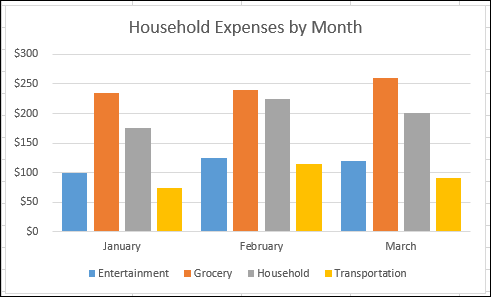
Note: The screen shots in this article were taken in Excel 2016. If you have a different version your view might be slightly different, but unless otherwise noted, the functionality is the same.
Before you get started
-
You data should be organized in a tabular format, and not have any blank rows or columns. Ideally, you can use an Excel table like in our example above.
-
Tables are a great PivotTable data source, because rows added to a table are automatically included in the PivotTable when you refresh the data, and any new columns will be included in the PivotTable Fields List. Otherwise, you need to either manually update the data source range, or use a dynamic named range formula.
-
Data types in columns should be the same. For example, you shouldn't mix dates and text in the same column.
-
PivotTables work on a snapshot of your data, called the cache, so your actual data doesn't get altered in any way.
Create a PivotTable
If you have limited experience with PivotTables, or are not sure how to get started, a Recommended PivotTable is a good choice. When you use this feature, Excel determines a meaningful layout by matching the data with the most suitable areas in the PivotTable. This helps give you a starting point for additional experimentation. After a recommended PivotTable is created, you can explore different orientations and rearrange fields to achieve your specific results. The Recommended PivotTables feature was added in Excel 2013, so if you have an earlier version, follow the instructions below for how to manually create a PivotTable instead.
| Recommended PivotTable | Manually create a PivotTable |
|
|
Working with the PivotTable Fields list
In the Field Name area at the top, select the check box for any field you want to add to your PivotTable. By default, non-numeric fields are added to the Row area, date and time fields are added to the Column area, and numeric fields are added to the Values area. You can also manually drag-and-drop any available item into any of the PivotTable fields, or if you no longer want an item in your PivotTable, simply drag it out of the Fields list or uncheck it. Being able to rearrange Field items is one of the PivotTable features that makes it so easy to quickly change its appearance.
| PivotTable Fields list | Corresponding fields in a PivotTable |
| | |
PivotTable Values
-
Summarize Values By
By default, PivotTable fields that are placed in the Values area will be displayed as a SUM. If Excel interprets your data as text, it will be displayed as a COUNT. This is why it's so important to make sure you don't mix data types for value fields. You can change the default calculation by first clicking on the arrow to the right of the field name, then select the Value Field Settings option.
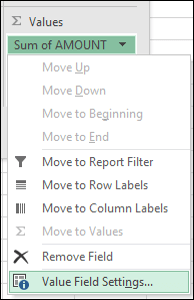
Next, change the calculation in the Summarize Values By section. Note that when you change the calculation method, Excel will automatically append it in the Custom Name section, like "Sum of FieldName", but you can change it. If you click the Number Format button, you can change the number format for the entire field.
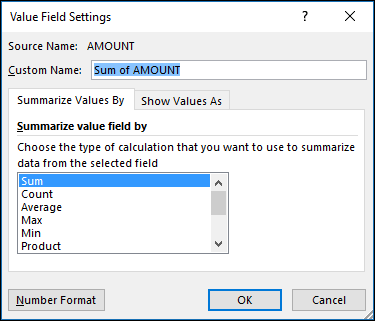
Tip: Since the changing the calculation in the Summarize Values By section will change the PivotTable field name, it's best not to rename your PivotTable fields until you're done setting up your PivotTable. One trick is to use Find & Replace (Ctrl+H) >Find what > "Sum of", then Replace with > leave blank to replace everything at once instead of manually retyping.
-
Show Values As
Instead of using a calculation to summarize the data, you can also display it as a percentage of a field. In the following example, we changed our household expense amounts to display as a % of Grand Total instead of the sum of the values.
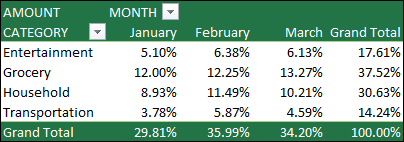
Once you've opened the Value Field Setting dialog, you can make your selections from the Show Values As tab.

-
Display a value as both a calculation and percentage.
Simply drag the item into the Values section twice, then set the Summarize Values By and Show Values As options for each one.
Refreshing PivotTables
If you add new data to your PivotTable data source, any PivotTables that were built on that data source need to be refreshed. To refresh just one PivotTable you can right-click anywhere in the PivotTable range, then select Refresh. If you have multiple PivotTables, first select any cell in any PivotTable, then on the Ribbon go to PivotTable Tools > Analyze > Data > Click the arrow under the Refresh button and select Refresh All.
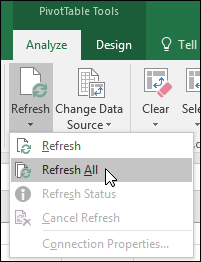
Deleting a PivotTable
If you created a PivotTable and decide you no longer want it, you can simply select the entire PivotTable range, then press Delete. It won't have any affect on other data or PivotTables or charts around it. If your PivotTable is on a separate sheet that has no other data you want to keep, deleting that sheet is a fast way to remove the PivotTable.
Do you have a specific question about PivotTables?
Help us improve Excel
Do you have suggestions about how we can improve the next version of Excel? If so, please check out the topics at Excel User Voice
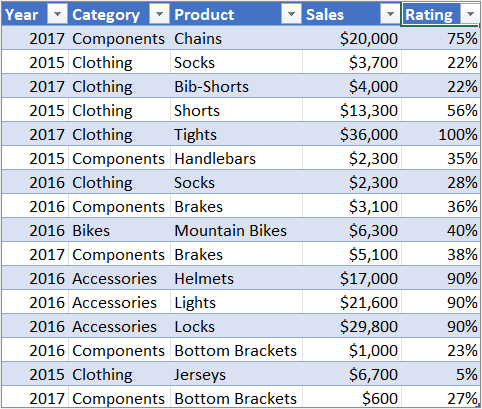
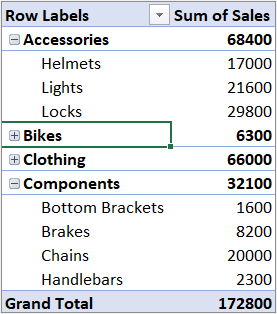




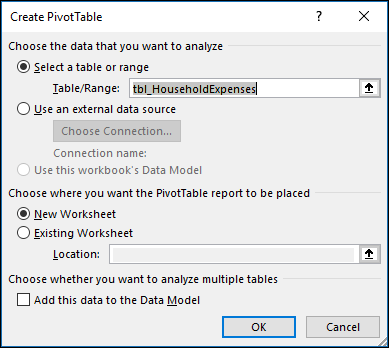
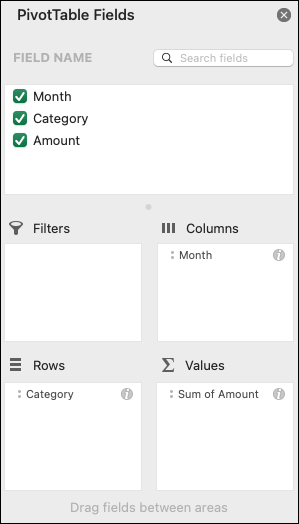
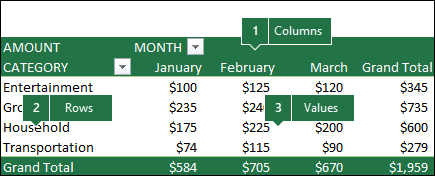
No comments:
Post a Comment